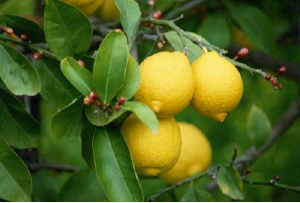 Fruit trees, shrubs and vines can fulfill a garden's need as well as any ornamental need. Some provide shade from summer's relentless heat or screen unwanted views, while others offer dramatic floral displays, dazzle with fall color or fill the garden with fruity fragrance.
Fruit trees, shrubs and vines can fulfill a garden's need as well as any ornamental need. Some provide shade from summer's relentless heat or screen unwanted views, while others offer dramatic floral displays, dazzle with fall color or fill the garden with fruity fragrance.
Houston gardens are able to grow many fruits with little maintenance. Some require more training than others, others may require some pest management, and depending on where you live, there are different varieties that are best suited to the chill hours you receive. With the winter holidays behind them and spring around the corner, gardeners will be looking for replacements for old or unsuccessful plantings or simply something new to add to their landscapes.
This year, be rewarded by plants that are not only ornamental but edible as well. As long as your garden has an area that receives at least six to eight hours of sun (citrus will produce with less sun), you can produce fresh fruit that will have you disappointed with the taste of grocery store varieties shipped in from out of state or even out of the country.
Shade
If it's a fruit that grows on a tree, it's a fruit that will provide shade. However, most fruit trees are small trees, between 10 to 20 feet, and many growers like to maintain trees short so fruit is easier to harvest. Three fruit trees that grow tall enough to shade rooftops are pecan, mulberry and avocado. Pecans and mulberries are deciduous, while avocados are evergreen.
One fruit that is not a tree but still can provide shade is grape, whose aggressive vines can cover a simply constructed shade structure in one to two growing seasons. In southeast Texas we have traditionally grown muscadine grape, a sweet, thick-skinned grape that grows in small clusters instead of bunches. However, after some growing trials in local gardens, there are several highly flavorful, bunching grapes that have been proven as good performers, one of which is the black monukka.
Dramatic floral displays
While all fruits start as flowers, there are some that flower in show-stopping fashion: the stone fruits, peaches, plums and nectarines, and the pome fruits, apples and pears. Not as showy during the day, but spectacular at night are the exotic white blooms of dragon fruit. This cactus tree-like plant has a unique growing habit sure to be a conversation piece in any garden.
Evergreen screens
Most fruiting plants are deciduous, but there are some evergreens. Among them are avocado, citrus and olive. Avocado and some of the taller growing citrus, like grapefruit and pomelo, will give you the height you may need in the quickest amount of time. Olives tend to be slow but worth the wait for their beautiful gray-green foliage and gnarling growth habit.
Fragrance
Fragrance can be found in almost any flower if you take the time to stop and smell it, but nothing permeates the garden like the fragrance of the citrus flower. From citrus with small blossoms to large blossoms, they all pack a perfume punch. The flowers also attract the giant swallow tail butterfly, and the foliage is cover to many species of songbirds, so in addition to adding fragrance, citrus trees bring flying color to the garden.
Color
Fruit ripening in the fall/winter such as persimmon and citrus give color in the form of the fruit itself. Persimmon trees begin to lose their foliage in late summer and early fall, exposing the brightly colored fruit on bare branches.
Citrus look like ready decorated Christmas trees with ornaments in yellow, orange and green.
Fall foliage color can be reliably found on blackberries, blueberries and grapes, displaying an array of red, orange, yellow and purple.
These are only a few suggestions for replacing traditional ornamentals with something that could double as dinner. Examine your garden with a fresh eye to discover areas ripe for changing into edible producing pockets. Come on out on April 21 for our Edible Landscapes class for more ideas on designing landscapes to be more edible.
This column is produced by Urban Harvest. Learn about gardening classes, community gardens and orchards, farmers' markets and more at www.urbanharvest.org. This article was written by Suzy Fischer, who is a registered landscape architect and principal of Fischer Schalles, a landscape design/build firm.